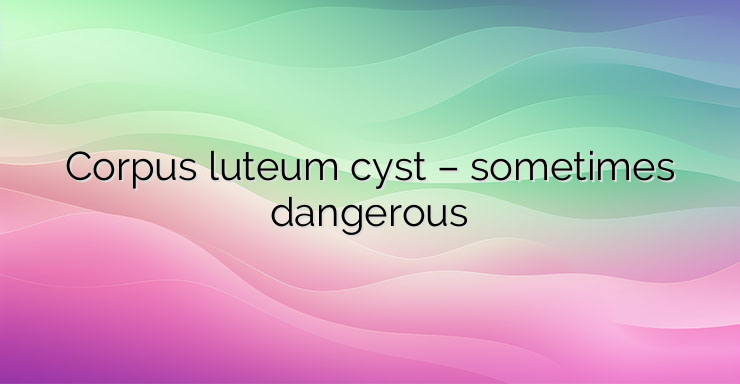Hormonal imbalance in women can lead to a number of disease states – from irregular menstrual cycles to infertility. Ovarian cysts fall under these conditions. The presence of cysts gives a series of complications, including acute ones such as hemorrhages. What is the corpus luteum? The corpus luteum is formed by the ruptured follicle after the egg is released during ovulation. It is a type of temporary endocrine gland. The function of the corpus luteum is to provide nutrients to the fertilized egg. Specialists distinguish two types of corpus luteum, which differ in size, duration and functional activity. 4 stages of the development of the corpus luteum are considered: sloughing of the cells of the folliculocytes in the ruptured follicle immediately after ovulation, growth of blood vessels towards the body, culmination – the corpus luteum grows to 1.2-2 cm, during ultrasound examination it is seen how the body protrudes above the oval of the ovary. At 7-8 days after ovulation, its highest activity is measured, expressed in the release of estrogens and progesterone. After 12-14 days, the corpus luteum undergoes reverse development. Its cells shrink in size and it shrivels. Gradually, its cells are replaced by connective tissue cells. 45 days after the follicle has released the egg, white bodies form in its place. The life of the corpus luteum lasts 12-14 days. During pregnancy, the corpus luteum regulates the rhythm of shortening of the fallopian tubes and prevents the contrahilal activity of the uterus. During pregnancy, the activity and growth of the corpus luteum continues until the 6th month of pregnancy, only after that it undergoes reverse development. Until then, its endocrine functions were completely taken over by the placenta. Cyst of the corpus luteum Cysts of the corpus luteum can form from the period of the first menstruation until the menopause in a woman. They are also obtained in the presence of pregnancy. It is believed that the cause of their occurrence is due to defects of the lymphatic and circulatory system, in which there is a collection of fluid in it. Taking medications, especially hormonal preparations, can also lead to the formation of a corpus luteum. Environmental and work conditions, prolonged stress, poor nutrition, sexually transmitted infections that affect the appendages of the uterus affect it. The cyst of the corpus luteum is a formation with a size of 2-7 cm in diameter with thickened walls. In most cases, the contents of the cyst are light, the inner surface – yellow. When bursting, the liquid is bloody. After ovulation, the follicle does not fill with follicular cells, but instead fills with fluid. A cyst measuring less than 3 cm in diameter is defined as a cystic corpus luteum. Large corpus luteum cysts do not secrete hormones. In the reverse development, their contents are resorbed, the size decreases and subsequently a white body is formed. In rare cases, the cyst remains. Signs of a corpus luteum cyst In most cases, no symptoms are experienced. Rarely, a pulling pain is felt low down in the abdomen towards the waist,which is caused by the stretching of the capsule of the ovary – This causes irritation of the local nerve endings. The disturbed menstrual cycle and bleeding between menstrual bleeding can also be a sign of the presence of a cyst. With “older” corpus luteum, hemorrhages are observed. When the cyst ruptures, severe abdominal pain is experienced along with hemorrhage. The condition requires urgent operative intervention. How is the cyst detected? During an ultrasound examination, the size, shape and features of the surface of the ovary are determined. If a cyst is present, its development is observed for three months in the first half of the menstrual cycle. The levels of female sex hormones are monitored. Treatment The treatment is operative, but only in cases of bleeding and severe pain. Currently, the operation is performed by laparoscopy, where incisions and blood loss are limited. It is not by chance that this method is called bloodless. Histology of material from the cyst is carried out to rule out a malignant process.


Leave a Reply